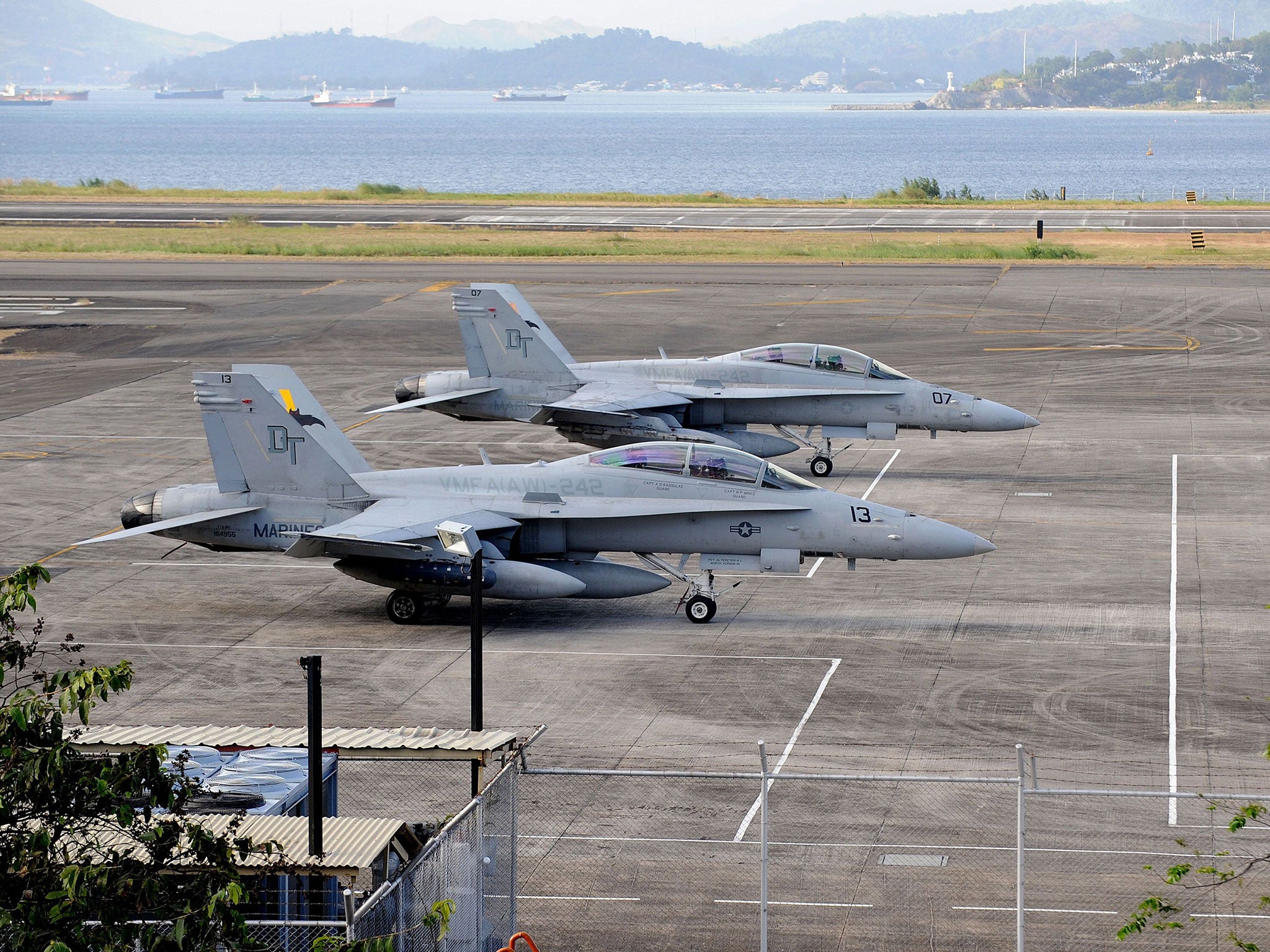Scarborough Shoal: China accused of secret ploy to 'rope off' Filipino waters
The Philippine government has recently pledged to base some of its military forces at Subic Bay, the western-facing base that was once the US's largest overseas naval facility

It seems little more than a rocky outcrop, 125 miles west of the Philippines, in the South China Sea. But Scarborough Shoal is the focus of growing concern in Manila about China’s ambitions in the area – which heightened with the discovery of a long string of floating booms with Chinese markings close to the shore of the outcrop.
Filipino fishermen who came upon the bright-orange booms, joined in a string half a mile long, described them as buoys intended to mark off oil spills. The fact that they were positioned within fishing grounds regarded by the Philippines as part of its territorial waters has further increased pressure on the government to counter China’s claim to the outcrop and its waters, which is part of a drive to expand Beijing’s military and economic reach across the whole of the South China Sea.
Chinese vessels have previously turned high-pressure hoses on Filipino boats near the Scarborough Shoal, claiming that it, along with the Spratly Islands to the south and the Paracels to the north, all belong to China – to the anger of the nearby Philippines, Vietnam, Malaysia and Brunei.
The Philippine government has recently pledged to base some of its military forces at Subic Bay, the western-facing base that was once the US’s largest overseas naval facility. Among those hoping America also makes a return are the hostesses of Manila’s upmarket Makati district, 50 miles to the east, looking for an increase in trade. “We’ll get their business,” said one known as “Baby”, at the Moulin Rouge bar. “The Americans will be all over the place.”
Officials dismiss the prospect of a large-scale return of US air and naval power to the base – now a shopping area – as fantasy. Rather, said a Philippine defence official, US forces would make more frequent visits to Subic Bay. “Nobody is thinking of Americans returning here permanently,” he added. “There is a lot of opposition.”
Meanwhile, foes of a revival of US military power in the Philippines have mounted a concerted campaign against it. The leftist Bayan group, formed during the revolution that deposed President Ferdinand Marcos nearly 30 years ago, plans to lead protests outside the walled, fortress-like American embassy in Manila.
Yet, the Philippines’ own military will be no match for Chinese air and naval power. On current plans, the country’s armed forces are to take delivery of two T-50 trainer jets from South Korea early next year – the first of 12 described as “FA-50 light attack fighters”, which will in reality be mostly symbolic. In effect, US military aircraft, roaring down from Okinawa and Guam, are expected to form the backbone of Philippine defences, along with the US Navy.
For now, the Philippines government is struggling to maintain a tiny marine force on a rusting old US landing vessel, grounded in the Spratlys, as a last line of defence against the Chinese incursions. The navy has been reinforcing the vessel with steel and concrete in an attempt to prevent it breaking up in rough seas.
“China has been waiting for the vessel to disintegrate,” a Philippine navy officer told journalists. “We are doing everything to hold it together.”
Join our commenting forum
Join thought-provoking conversations, follow other Independent readers and see their replies
Comments